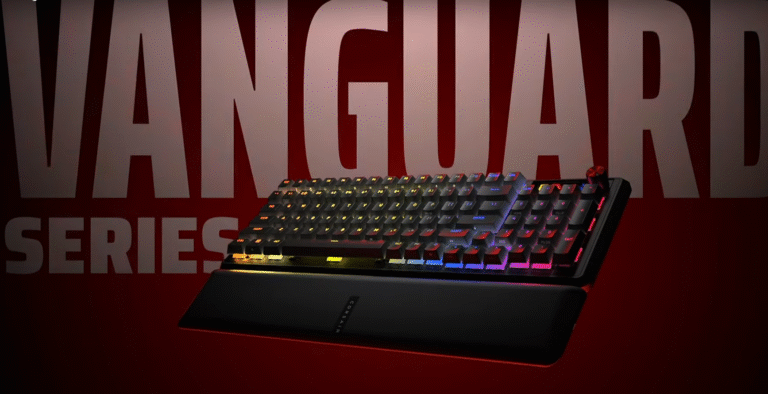
|
Getting your Trinity Audio player ready...
|
In a world where technology dominates and constantly advances, the question often arises: Are video games still a thing? The easiest and shortest answer is yes.
Thanks to many factors, technological evolution doesn’t mean video games are left behind. On the contrary—gamers want games to evolve, with improvements in both graphics and performance. Just as the gaming community is passionate about games, they’re also interested in technology. It’s simple: gamers need high-end tech not just for their setups, but also for competitive play. Sure, some say you don’t need the best monitor, keyboard, or mouse—but ask any pro, and you’ll get the same answer: once everyone reaches a certain level, it’s no longer about gameplay knowledge—everyone knows the game, how to play, and how to improve. The real difference becomes the technology behind each player’s setup. Low ping, high refresh rates, and consistent FPS can all make the difference.
So no, technology won’t replace video games—it complements them. Video games offer completely different experiences, allowing people to do things they can’t in real life, to be creative, and to escape the societal box where you’re told things must be done a certain way. That’s why so many people play: for freedom. To leave the real world behind and live in their own fantasies and creativity without judgment. Sometimes, it’s just about laughing in tough times, spending time with friends, and enjoying even the goriest, most graphically intense games. Often, the graphics don’t matter. What matters is playing—and the word play itself carries immense meaning.
The Weight of the Word “Play”

Many people underestimate the value of gaming. They assume someone plays just because they’re bored or introverted. But that’s not the case. Playing a game you love—one that makes you laugh and helps you enjoy the moment—brings happiness and connection. In today’s world, where loneliness and burnout are increasingly common, games provide a solution. They bring people together from across the globe. Some players even learn new languages just to communicate in-game. So no—playing isn’t just playing. For many, it’s a way to relax, escape, and recharge. It doesn’t make life’s problems disappear, but for a while, you step away from them and just have fun. Gaming can genuinely make people happier. Of course, sometimes it brings frustration—dying or losing a match—but even that’s normal and can be fun in its own way.
Why Video Games Aren’t Going Anywhere – Stats Don’t Lie
In 2023 alone, the gaming industry reached $183.9 billion, with over 3.3 billion players worldwide. What used to be a space for kids and teens has gone mainstream across all age groups—the average gamer today is 36 years old. Looking ahead, it’s clear: video games aren’t disappearing. In fact, the future looks more exciting than ever, with innovation across every platform.
How Technology Is Shaping the Future of Gaming

1. Virtual Reality (VR): A New Kind of Immersion
VR promised a futuristic gaming experience years ago, but adoption has been slower than expected—mainly due to the high cost of headsets, which are out of reach for many average gamers. While visuals were stunning, most early VR games were basic, with limited mechanics. Still, the community is holding out hope for a VR revolution.
Tech giants like Meta, Valve, Sony, and even Apple are pushing boundaries with lighter, more affordable, and powerful VR hardware. The market for VR/AR stood at $11.5 billion in 2024 and is expected to explode to $370 billion by 2034. There’s still so much untapped potential in this space.
2. Augmented Reality (AR): Merging the Physical and Digital Worlds
While VR immerses players in digital environments, AR enhances the real world with digital overlays. Remember the Pokémon GO craze of 2016? Parks and streets were packed with players hunting digital monsters. That game alone generated over $8 billion in revenue, proving AR’s massive potential.
Unlike VR, AR is inherently social and location-based. It encourages players to get outside and explore. Companies like Meta and Magic Leap are investing in AR glasses and mobile-based AR, showing how AR could redefine gaming by blending virtual content into real-world environments—without replacing reality.
3. Artificial Intelligence: Smarter Worlds, Better Stories
AI has long been part of gaming—from Pac-Man ghosts to Halo enemies. But recent breakthroughs are making NPCs more intelligent, lifelike, and reactive. Studios now use behavior trees and procedural generation to build dynamic game worlds.
Games like No Man’s Sky use AI to generate entire galaxies. Researchers are working on experience-driven level design, where games adapt to your playstyle. This is just the beginning—future innovations may bring adaptive storytelling and AI “game masters” that shape narratives in real time.
4. Cloud Gaming: Play Anywhere, Anytime
Imagine streaming a AAA game as easily as watching Netflix—that’s cloud gaming. By shifting processing to remote servers, players can enjoy high-end games on lower-end devices.
Platforms like Xbox Cloud Gaming, PlayStation Now, GeForce Now, Amazon Luna, and even Netflix are investing heavily in this model. While internet speed remains a barrier in some regions, the cloud gaming market is projected to exceed $143 billion by 2032.
5. High-Fidelity Graphics: Visuals at the Next Level
Thanks to ray tracing and powerful GPUs from NVIDIA and AMD, gaming visuals have entered a new era. Ray tracing simulates real-world light behavior, creating stunning realism in shadows and reflections. Games are becoming more cinematic, photorealistic, and emotionally engaging.
High-end visuals also play a role in VR and AR, making immersive experiences even more convincing. The trade-off is performance—these features require powerful hardware—but the results are stunning.
6. The Metaverse and Social Gaming: A New Kind of Playground
The word Metaverse might feel overhyped, but the core idea is real: persistent digital worlds where people live, work, and play. Games like Fortnite, Roblox, and Minecraft have already blurred the lines between game and platform, becoming creative sandboxes and social hubs.
These platforms host live concerts, virtual classrooms, and in-game economies. They represent the start of a new era for both gamers and society—if launched well, they could change how we interact, work, and live. It’s a massive leap that may still take time, but the path is being paved.
So… Are Video Games Still a Thing?
Not only are video games still “a thing,” but they’re growing more relevant than ever. The reasons are clear—from everything discussed above to the incredible pace of technological innovation. Games are no longer just for kids; adults are playing too, and the industry is evolving into something much bigger—a unique experience for everyone.
Gaming sparks curiosity even in non-gamers. It pulls people in, offering an escape, a challenge, or simply fun with friends. So next time someone asks, “Are video games still a thing?”—feel free to laugh. It’s a funny question in a world where gaming is thriving more than ever. Just hand them a controller or a headset and invite them to join the fun.





